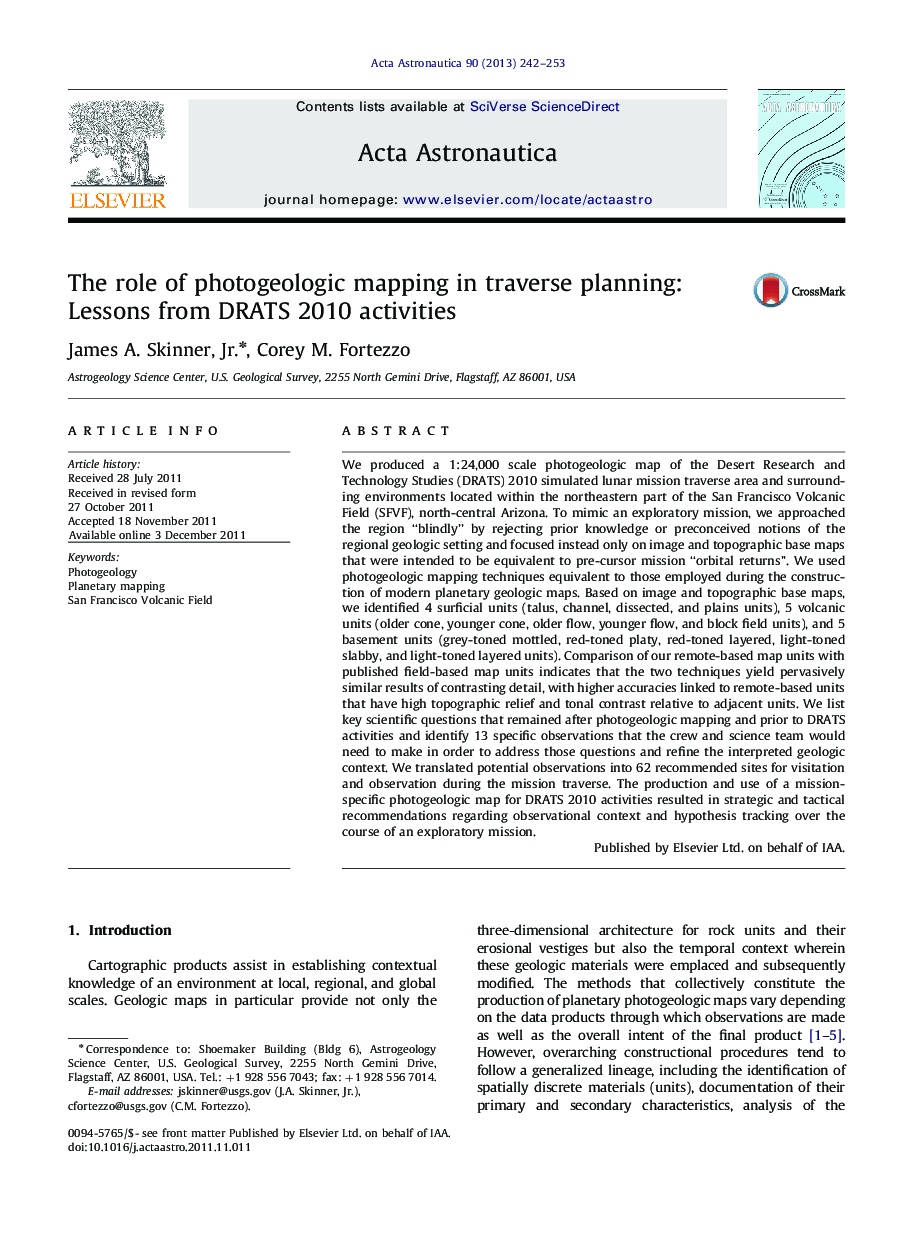| کد مقاله | کد نشریه | سال انتشار | مقاله انگلیسی | نسخه تمام متن |
|---|---|---|---|---|
| 1714944 | 1519960 | 2013 | 12 صفحه PDF | دانلود رایگان |

We produced a 1:24,000 scale photogeologic map of the Desert Research and Technology Studies (DRATS) 2010 simulated lunar mission traverse area and surrounding environments located within the northeastern part of the San Francisco Volcanic Field (SFVF), north-central Arizona. To mimic an exploratory mission, we approached the region “blindly” by rejecting prior knowledge or preconceived notions of the regional geologic setting and focused instead only on image and topographic base maps that were intended to be equivalent to pre-cursor mission “orbital returns”. We used photogeologic mapping techniques equivalent to those employed during the construction of modern planetary geologic maps. Based on image and topographic base maps, we identified 4 surficial units (talus, channel, dissected, and plains units), 5 volcanic units (older cone, younger cone, older flow, younger flow, and block field units), and 5 basement units (grey-toned mottled, red-toned platy, red-toned layered, light-toned slabby, and light-toned layered units). Comparison of our remote-based map units with published field-based map units indicates that the two techniques yield pervasively similar results of contrasting detail, with higher accuracies linked to remote-based units that have high topographic relief and tonal contrast relative to adjacent units. We list key scientific questions that remained after photogeologic mapping and prior to DRATS activities and identify 13 specific observations that the crew and science team would need to make in order to address those questions and refine the interpreted geologic context. We translated potential observations into 62 recommended sites for visitation and observation during the mission traverse. The production and use of a mission-specific photogeologic map for DRATS 2010 activities resulted in strategic and tactical recommendations regarding observational context and hypothesis tracking over the course of an exploratory mission.
► We produced a 1:24 K scale photogeologic map to support simulated lunar traverses.
► Remotely identified units are generally similar to field-based units.
► Map helped identify key observations required on traverse.
► Photogeologic maps assist planning and hypothesis tracking over mission timeline.
Journal: Acta Astronautica - Volume 90, Issue 2, October 2013, Pages 242–253